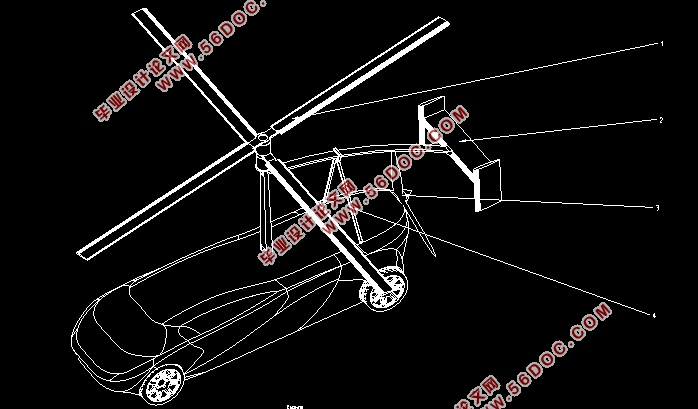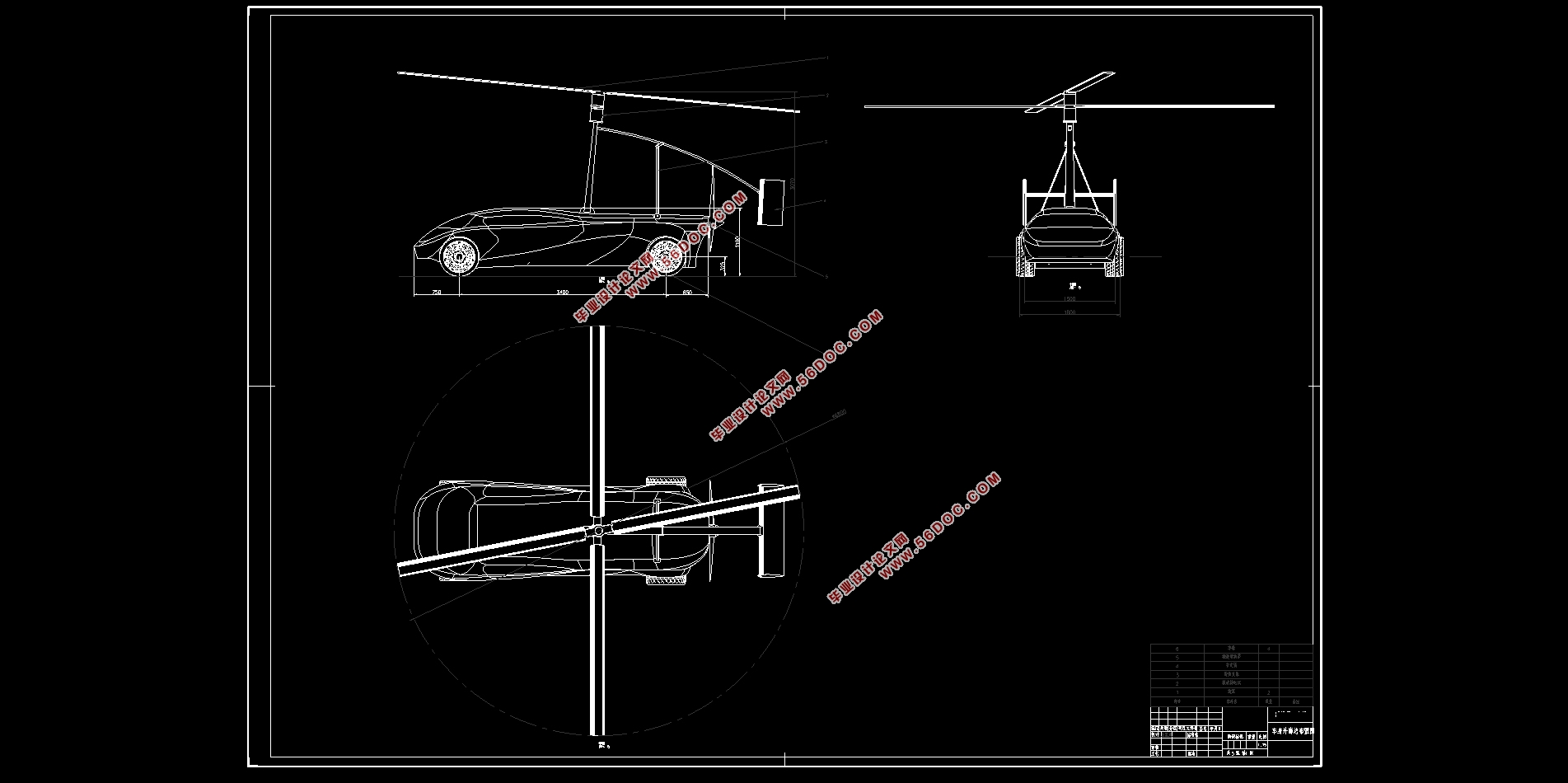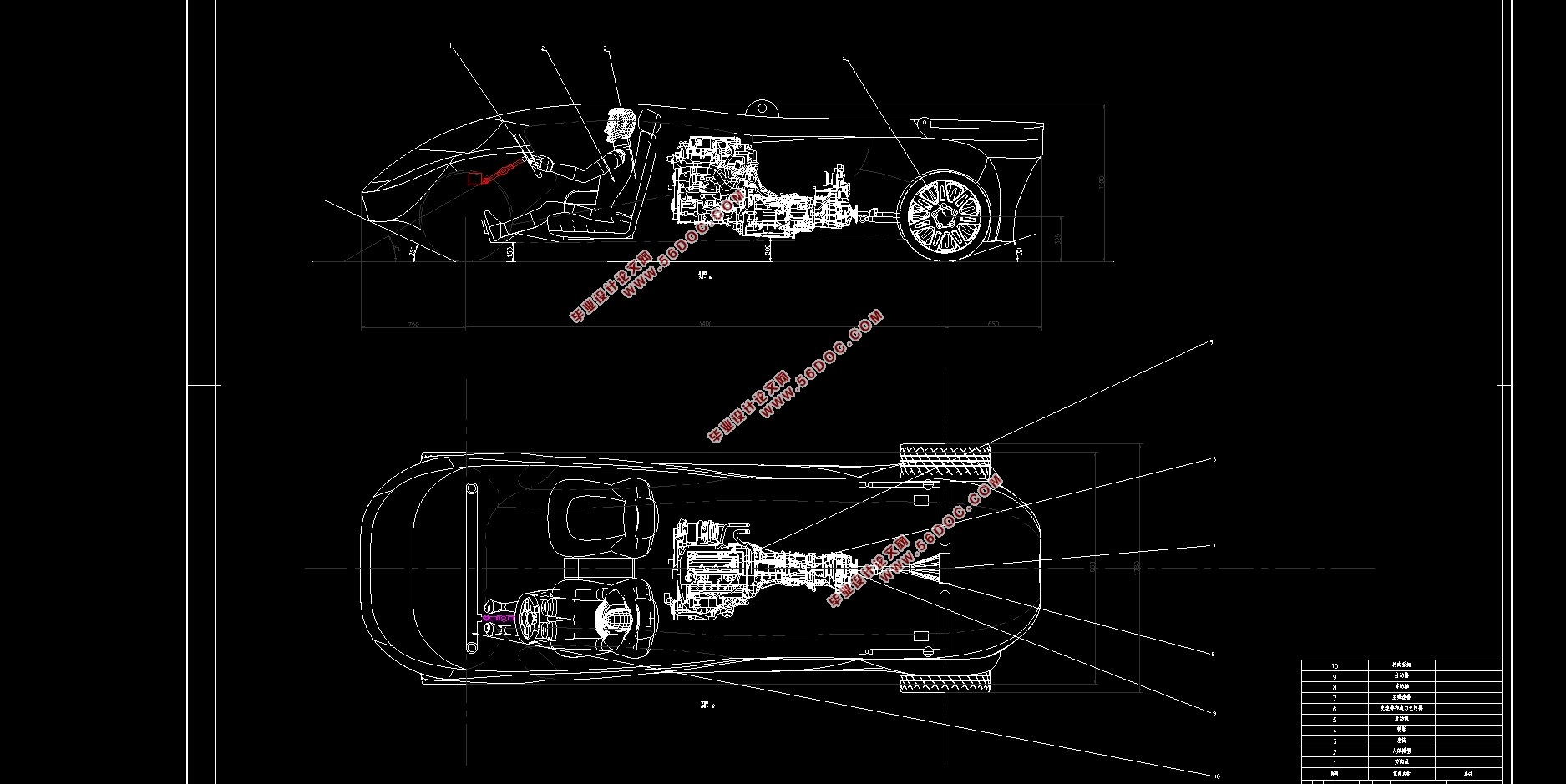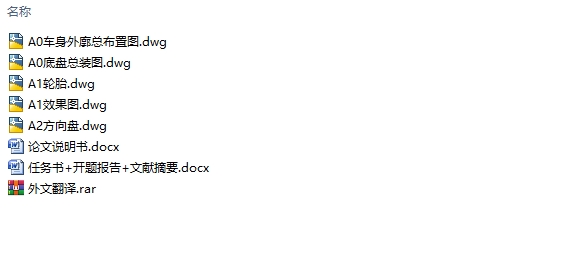飞行汽车的概念设计及总布置(含CAD图)(任务书,开题报告,外文翻译,文献摘要,论文说明13500字,CAD图5张)
摘要
在技术日益发展的今天,飞行汽车的出现是大势所趋,随着城市的交通情况逐渐拥堵,人们的目光逐渐聚焦于飞行汽车,这些年来飞行汽车的设计也逐渐新颖,飞行汽车的在一些方面具有独特的优势,除在解决城市拥堵的情况下,还可以用作观光和救援等方面。本文所设计的飞行汽车的升力方式为自转旋翼式,对比于固定翼,它在短距离内可以实现垂直降落;对比于普通旋翼式,它质量较小,机械结构较为简单,成本较低,所以本文选取自转旋翼式飞行汽车为主要设计目标。
本文的主要研究设计内容如下:
本文就飞行汽车的升力系统进行对比选型,在单旋翼、共轴双旋翼、剪刀式旋翼、多轴多旋翼中分析优缺点,选择旋翼的模型并进行尺寸设计。
根据汽车设计对于飞行汽车的总体车身进行计算和预估,比如:车身外廓尺寸、轴距;飞行汽车的质量参数;飞行汽车的性能参数。
根据实际的需要对于底盘的各个系统进行选型,有悬架的选取、传动系统的设计、变速器的基本设计。
根据设计的参数需要进行计算,选择合适的发动机以及预旋转机构。
设计参数完成,对于地面性能以及空中性能进行计算。
本文在设计的过程中参考了一些国内外的已有的飞行汽车的模型,性能计算方面参照了汽车设计,对各系统的做出了布置。
关键词:飞行汽车、总体布置、系统选型、自转旋翼、性能计算
Abstract
Today, with the development of technology, the emergence of flying cars is the general trend. With the traffic congestion in cities, people gradually focus on flying cars. Over the years, the design of flying cars has become more and more innovative. Flying cars have unique advantages in some aspects. In addition to solving urban congestion, they can also be used for sightseeing and rescue. The lift mode of the flying vehicle designed in this paper is the spin-rotor type, which can achieve vertical landing in short distance compared with the fixed wing type. Compared with the ordinary rotor type, it has smaller mass, simpler mechanical structure and lower cost. Therefore, the spin-rotor type flying vehicle is chosen as the main design objective in this paper.
The main research and design contents of this paper are as follows:
In this paper, the lift system of flying vehicle is compared and selected. The advantages and disadvantages of single-rotor, coaxial twin-rotor, scissors-rotor and multi-axis multi-rotor are analyzed, and the rotor model is selected and the size is designed.
Calculate and predict the overall body of the flying vehicle according to the design of the vehicle, such as the body outline size, wheelbase, the quality parameters of the flying vehicle and the performance parameters of the flying vehicle.
According to the actual needs of the chassis system selection, there are suspension selection, transmission system design, the basic design of transmission.
According to the design parameters, the appropriate engine and pre-rotating mechanism are selected.
The design parameters are completed and the ground performance and air performance are calculated.
In the process of design, this paper refers to some existing flying vehicle models at home and abroad, and in the aspect of performance calculation, refers to the automobile design, and makes the layout of each system.
Key words: flying vehicle, general layout, system selection, spinning rotor, performance calculation
车长 车宽 车高
4.8m 1.66m 1.1m
设计完汽车的主要车身尺寸,还需要考虑飞行汽车的底盘上的一些基本尺寸:
汽车的轴距L
飞行汽车的轴距在此不仅要考虑到传统的汽车的空间布置问题,还应考虑到飞行汽车的总的空间布置问题,我们在此将发动机中置,同时降低车身高度,势必会增加轴距的长度。轴距过长在一定的条件下会影响汽车的操纵稳定性等汽车性能指标;同时轴距过短会使汽车的空间变小。所以在此综合多种因素,我们取大一点的轴距,初步定轴距为3.4m。
前后轮距b_1和b_2
飞行汽车的前后轮距会影响汽车的空间布置,受到左右轮距的限制,车身的宽度会受到影响,发动机的布置以及座椅、悬架的的布置会受限。同时在汽车的性能指标方面,会改变汽车的稳定性,轮距减小,会减小汽车的转弯半径,机动性变好。在飞行汽车的概念设计上,考虑到减小飞行汽车的迎风面积,减小空气阻力,在不影响汽车的正常空间布置的情况下,取小于普通汽车的轮距。
根据飞行汽车的概念设计以及汽车设计的教材,初步选定轮距为b_1/b_2:1660mm/1780mm.
飞行汽车质量参数
汽车整备质量
汽车的整备质量是汽车在完全空载时但加满油的情况下的汽车质量,他的数值在一定情况下会影响汽车的燃油经济性。
设计初期我们根据指导书上,每位乘员占汽车的整备质量为280kg,设计的乘员数为2人,发动机的排量为1.8T,则得到汽车的整备质量为560kg。
汽车的总质量
设计的乘员数是2位,所以以每人70kg来算,汽车的总质量为700kg。





目录
第1章 绪论 1
1.1 研究的意义 1
1.2 研究的背景以及研究现状 1
1.3 设计的思路 2
第2章 总体车身设计 3
2.1 飞行汽车总设计形式 3
2.2 车身尺寸的设计 3
2.2.1 汽车的轴距L 4
2.3.2 前后轮距b1和b2 4
2.3 飞行汽车质量参数 4
2.3.1 汽车整备质量 4
2.3.2 汽车的总质量 4
2.4 汽车的性能参数 5
2.4.1 动力性参数 5
2.4.2 地面模式的性能 5
2.4.3 空中模式的性能 5
第3章 气动外形及气动零件 6
3.1 升力系统的选择 6
3.1.1 升力系统的种类 6
3.1.2 不同升力系统的优缺点 9
3.1.3 升力系统的分析以及选择 9
3.2 旋翼的选型 9
3.2.1 单轴单旋翼构型 9
3.2.2 单轴双旋翼构型 10
3.2.3 剪刀式旋翼构型 10
3.2.4 多轴多旋翼构型 10
3.3 其他气动零件的设计 10
3.3.1 气动外形的设计以及减租 10
3.3.2 水平安定面和垂直安定面 10
3.3.3 旋翼的参数化设计 11
3.3.4 推进螺旋桨的设计 12
第4章 底盘系统的设计 13
4.1 悬架的选取以及设计 13
4.1.1 悬架的可选类型 13
4.1.2 悬架的选取 14
4.2 传动系的设计以及布置 14
4.3 变速器的设计以及计算选取 15
4.4 制动系统的设计 16
4.4.1 地面模式制动系统 16
4.4.2 空中模式制动系统 17
4.5 轮胎的选择 17
第5章 动力系统的设计 18
5.1 发动机的参数化设计 18
5.1.1 地面模式 18
5.1.2 飞行模式 18
5.1.3 发动机的选取 19
5.2 预旋转机构的设计 19
第6章 飞行汽车的总布置 21
6.1 飞行汽车的底盘布置 21
6.2 飞行模式和地面模式的机械布置 21
第7章 性能计算 23
7.1 地面模式的性能计算 23
7.1.1 初始计算参数 23
7.1.2 动力性计算 24
7.1.3 制动性计算 24
7.1.4 操纵稳定性的计算 25
7.2 飞行模式的性能计算 28
7.2.1 航程航时 28
7.2.2 滑跑起飞 29
7.2.3 着陆距离 29
7.2.4 计算结果 30
7.3 本章小结 31
第8章 飞行汽车的评价及展望 32
8.1 飞行汽车的评价 32
8.2 飞行汽车的展望 32
参考文献 33
致谢 34
|











